“Japanese Tea” is a Japanese product that we highly recommend. What is “Japanese tea”? There are many ways of defining them. But we won’t go into too much detail here, so divide it into two categories: Matcha and Sencha. Shizuoka, Kagoshima, Mie, and Miyazaki prefectures are well known as “Japanese tea” production areas. And also Kyoto and Saitama are famous production areas of “Japanese tea”. Each area has its own famous brand of tea that is marketed as a product. Before the Meiji era, it was quite actively cultivated in almost all regions of Japan except for the Hokkaido region. Although there are differences in the quality of the tea leaves, it seems to have been drunk on a daily basis regardless of status. Since the Meiji Restoration, “Japanese yea” has been exported overseas as well. However… At the same time due to the influence of Western food culture, domestic consumption gradually decreased. In addition, after World War II, the distribution of tea leaves produced overseas increased rapidly, and the amount of tea exported to overseas markets from Japan decreased significantly. The food culture brought from overseas has greatly diversified the tastes and preferences of the Japanese people. Some examples of drinks are coffee, tea, herbal tea… Well, it’s really a lot of ones. But still, “Japanese tea” seems to suit the tastes of Japanese people even today. “Japanese tea” products in cans and PET bottles are being consumed at a fairly steady rate in Japan. This is apparently due in large part to the health-conscious trend of recent years. Even overseas, “Japanese tea” is beginning to attract attention as the popularity of Japanese food increases. We are very much looking forward to the future of “Japanese tea” products.
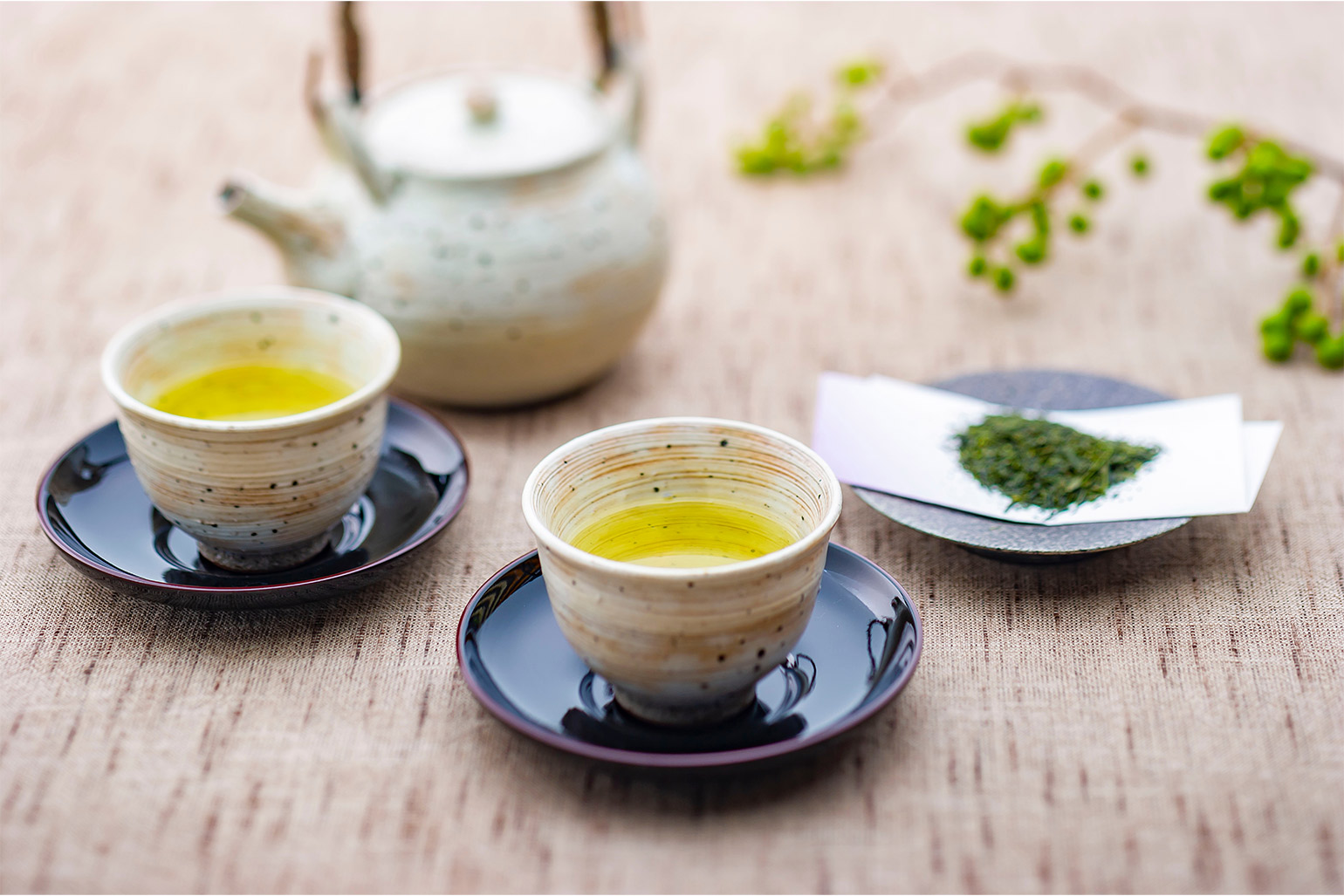
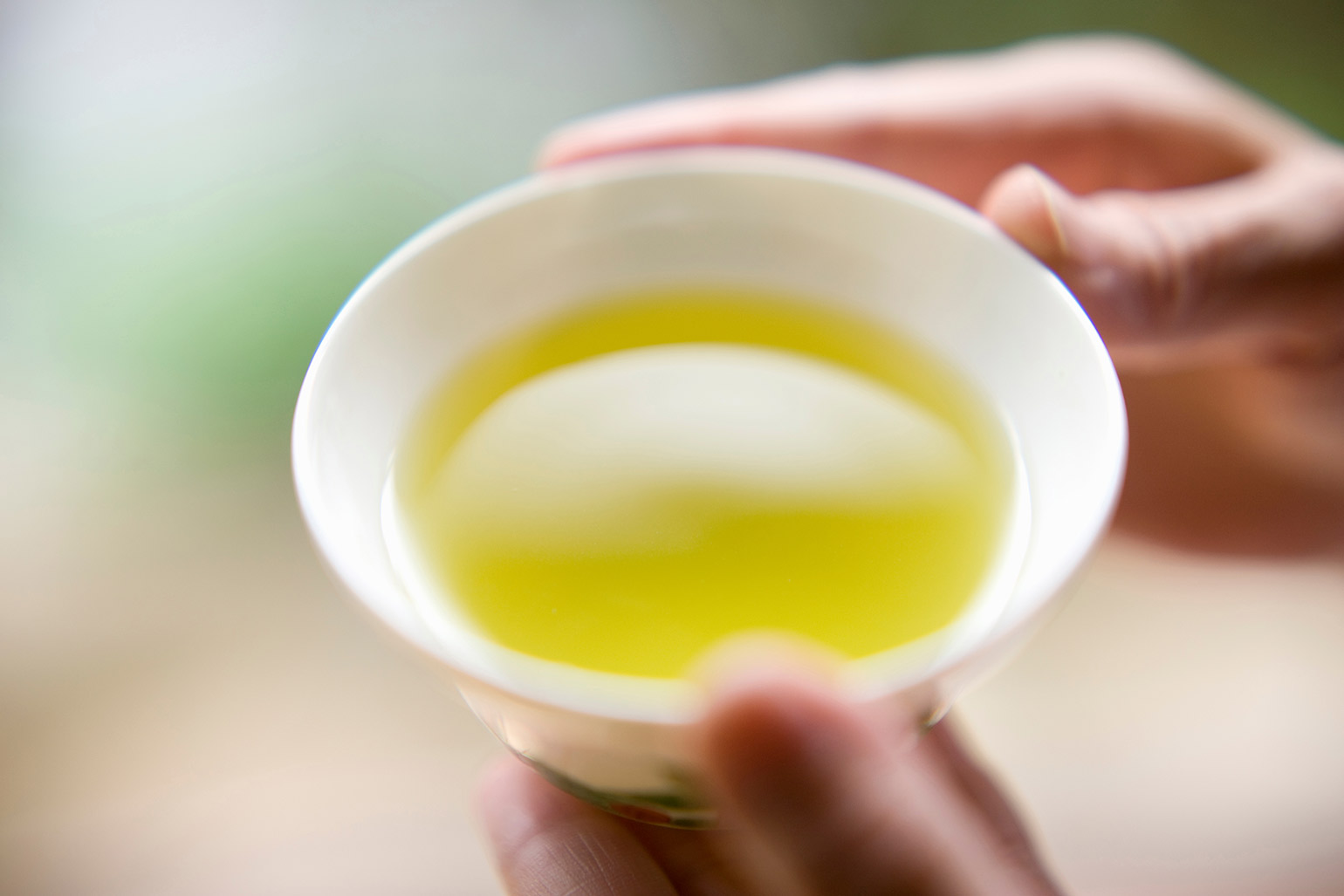
As many of you might know, when drinking “Japanese tea”, you do not add sugar or milk. It is drunk as is. Canned and PET bottled “Japanese tea” products are generally “straight tea”. “Japanese tea” has been loved and drunk by people regardless of their status, but only the upper class people drank it with sugar and other ingredients. Although it was true that sugar and milk were luxuries. After all, it seems that they preferred to drink it as it was. It was because of such customs or preferences… Later, when coffee and tea were brought from overseas, there was not a small percentage of people who preferred to drink them as they were, without adding sugar or milk. Therefore, there are many canned and PET bottled coffee and tea products without sugar or milk which are marketed in Japan. For Japanese people, drinking “straight” coffee or tea is a preference that existed even before the recent health-conscious boom. So, we would recommend drinking “Japanese tea” without sugar or milk.
Matcha

“Matcha” is a powdered form of green tea leaves. This is what is used in the tea ceremony for drinking, and is made by adding hot water and stirring it. We’ve heard that sweets and other foods made with this powder are very popular among people overseas. You can use matcha powder as an ingredient for sweets and also as a seasoning. Until a while ago, we only had the impression that it was sometimes used in Japanese sweets. It seems to go well with Western ingredients.
Sencha

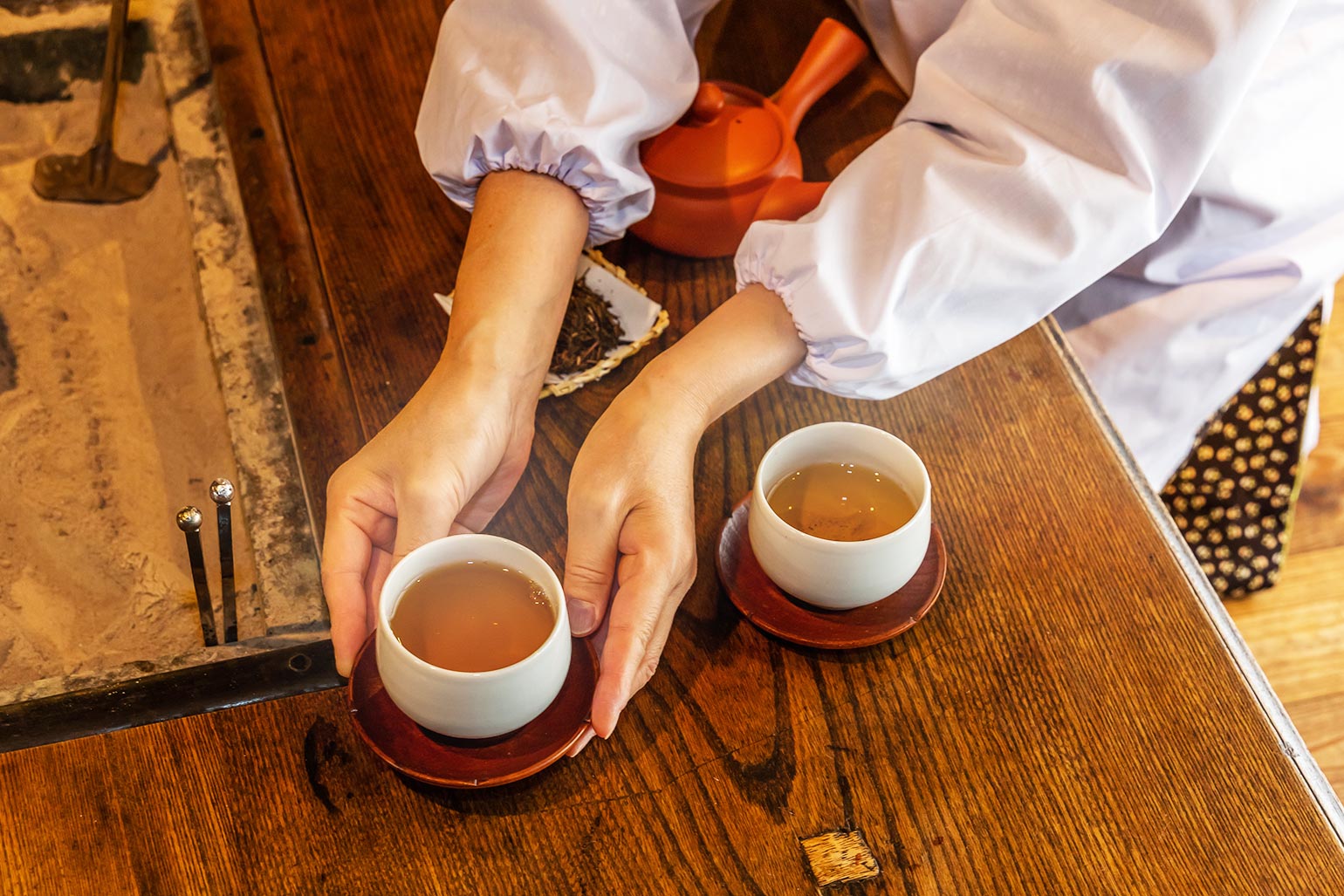
Green tea, as it is commonly referred to, is this “Sencha”. It is made by steaming tea leaves. It is unfermented tea. Boiling the tea leaves in hot water or serving in a teapot, you can make good tea.
There are more different types of “Sencha”.
・Gyokuro:
The cultivation method is slightly different from other teas. The tea is shielded from the sun for a period of time before harvesting to condense the flavor and reduce the astringency. The first and second tea leaves for the early harvest are used.
・Sencha:
Unlike Gyokuro, it does not block out sunlight. This is a different kind of tea “Sencha,” which means green tea in general. The processing is different from other teas.
・Houji-cha:
It is roasted tea leaves. (“Houji” means “roasted”.) The taste is naturally fragrant and the color is brownish.
・Genmai-cha:
It is a mixture of roasted bancha or sencha tea and steamed or roasted brown rice (“Genmai” is brown rice). By the way, Bancha is a non-standard or low grade of Sencha. So it is less expensive.
Mugi-cha
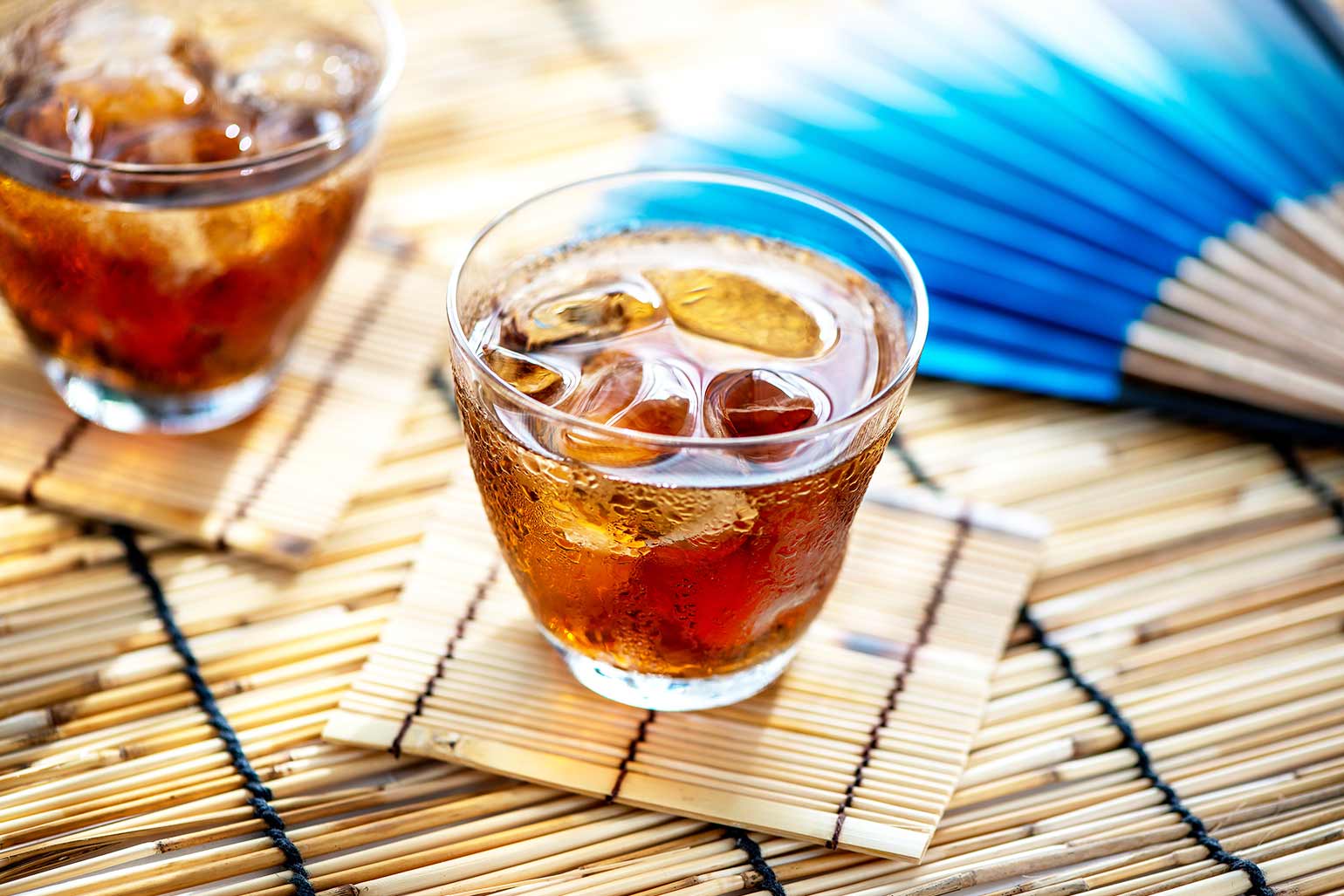
Although Mugi-cha(barley tea) is not a tea made from tea leaves, it is one of Japan’s most popular teas, so we would like to introduce it to you. It is a tea made by boiling (or soaking in water) roasted barley seeds in their husks. It seems that mugi-cha has a longer history than green tea. One theory is that it was drunk as far back as the Jomon period (More than 1000 years BC). According to official records, it was a favorite tea of the nobility during the Heian period (End of 8th century – end of 12th century). Later, it spread to the samurai families, and from the Edo period onward, it became widely consumed by the general public. Until around the Meiji ~ Taisho periods, it was called “mugi-yu(hot barley water)”. Since the barley used to make this drink is harvested in early summer, it became popular as seasonal tea to be enjoyed in summer. Later, teabag-type products for boiling or for drinking out of water also became commercially available, and mugi-cha had become a summer staple. Today, as with other kinds of teas, cans, paper cartons, and PET bottle types are also commercially available. It tastes great hot or cold, and can be easily prepared and left at home, which is a wonderful advantage. In addition, because of its extremely rich mineral content, it has been attracting attention overseas in recent years.
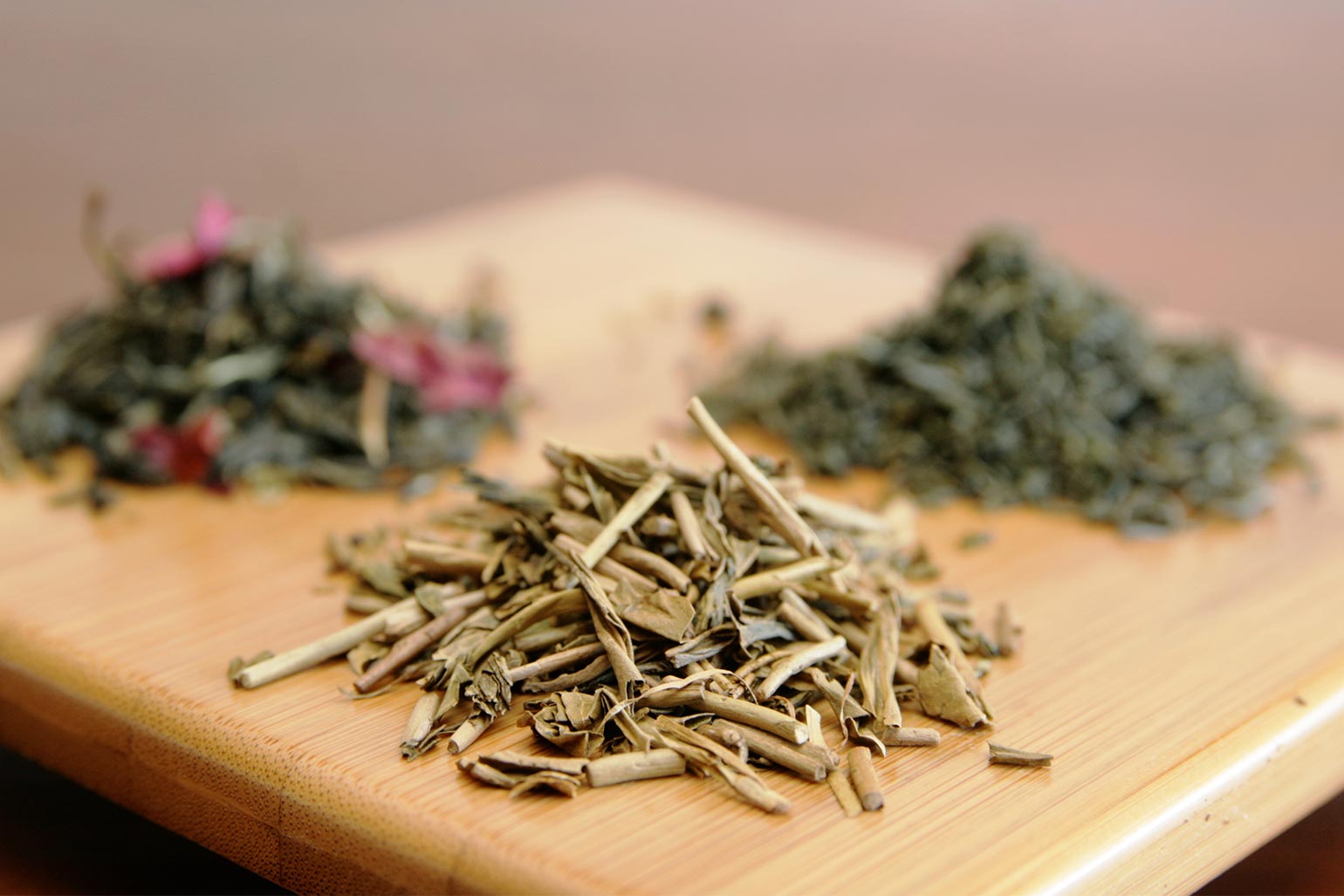
We hope that above section has been of some help to you. In some restaurants in Japan, you might have a chance to try Japanese tea instead of glass water. And you can also find a wide variety of bottled products at stores. Each product has quite a different “taste” and “aroma”. Let’s try some things!




_op.png)
_001.png)
_002.png)
_003.png)
_004.png)
_005.png)
_006.png)
_007.png)
_008.png)
